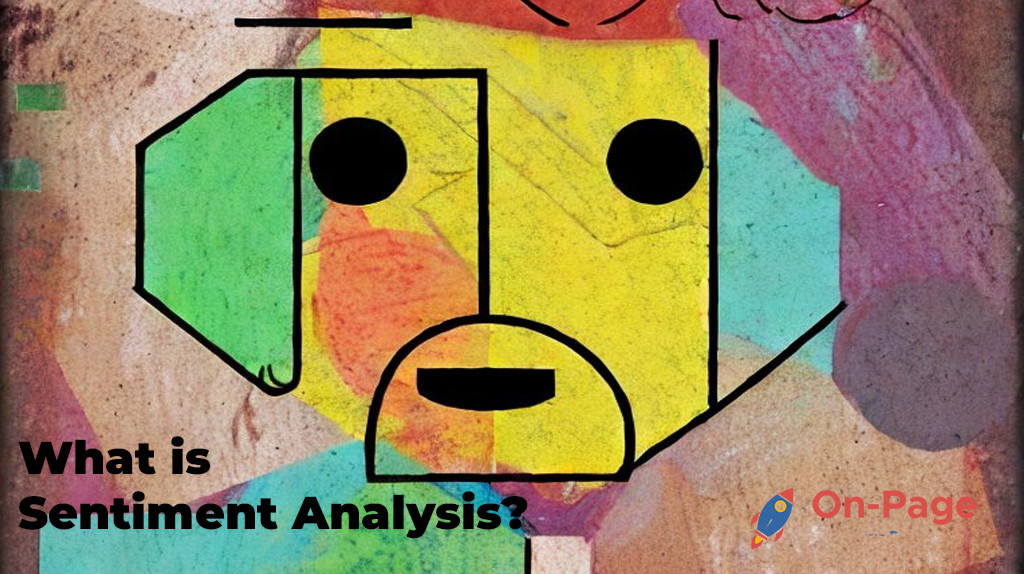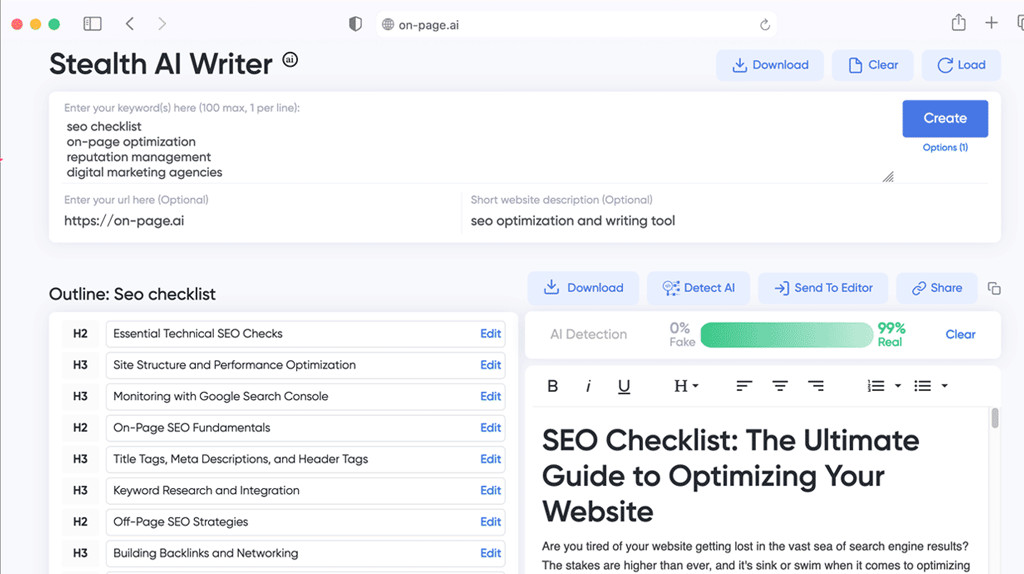Picture this: You’ve just launched your latest product, and amid the chaos of promotion and customer inquiries, you begin to lose track of what people are genuinely saying about it. But what if there was a powerful tool that could pinpoint exactly how customers feel about your product and help guide your next strategic move? Enter Sentiment Analysis, an Artificial Intelligence (AI) driven technology that’s changing the game for businesses looking to stay one step ahead in understanding their audience. Dive in as we unlock the secrets behind Sentiment Analysis and reveal how it can elevate your brand to new heights.
Sentiment analysis is a technique used to automatically identify and extract subjective information from text. In the context of AI, it is used to analyze large volumes of data, such as reviews or social media posts, for insights into customer opinions and emotions towards products or services. By understanding this sentiment, businesses can improve their offerings, enhance customer satisfaction, and drive profitability.
What is Sentiment Analysis?
Sentiment analysis, also known as opinion mining, is the process of using natural language processing techniques to identify and extract subjective information from textual data. In simpler terms, it involves analyzing large amounts of text, such as social media posts, customer reviews, and news articles to determine whether the overall sentiment expressed within that text is positive, negative or neutral.
For instance, say a company launches a new product in the market and wants to gauge its reception among customers. One approach would be to manually read thousands of comments on social media, which would take considerable time and effort. Alternatively, by deploying sentiment analysis tools, the company can quickly determine the overall sentiment of customer comments, saving time and resources while still achieving valuable insights.
In essence, sentiment analysis is an automated process that helps businesses understand how people feel about their products or services without having to extensively read through thousands of individual messages or reviews.
A common analogy used to explain sentiment analysis compares it to asking someone how they feel about something and then recording their answer on a scale from 1-10. Sentiment analysis provides this same rating system but on a much larger scale – analyzing hundreds or even thousands of individual opinions.
The level of automation involved can greatly benefit businesses of all sizes by adding structure to unstructured data and enabling them to make informed decisions quickly. This is especially important in today’s fast-paced environment where companies are expected to respond promptly to changes in customer needs and behavior.
Sentiment analysis has evolved from being a simple counting method for positive or negative words to a more sophisticated approach that takes into consideration context, tone, sarcasm and other linguistic nuances that can affect the accuracy of its results. Thanks to advancements in AI technology, newer approaches like deep learning have been integrated with sentiment analysis models leading to better accuracy and predictive capabilities.
Next, we’ll explore Natural Language Processing and how it helps in determining emotions within text.
- According to a 2019 study by CIO, unstructured data, which includes text analyzed using sentiment analysis techniques, accounts for around 80-90% of all digital content.
- A report from MarketsandMarkets revealed that the global sentiment analysis market size is expected to grow from USD 3.6 billion in 2020 to USD 6.3 billion by 2025, at a Compound Annual Growth Rate (CAGR) of 11.8% during the forecast period.
- ResearchGate published a study in 2017 stating that hybrid approaches to sentiment analysis, which combine both rule-based and machine learning methods, achieved an average accuracy of up to 89%, outperforming either method individually when applied across various datasets.
Natural Language Processing and Emotions
The key to sentiment analysis is the ability to analyze and understand the nuances of human language that can influence the overall sentiment of a piece of text. Natural Language Processing (NLP) techniques are used to extract meaningful information from text, including contextual cues, variations in word usage, and even sarcasm.
For example, words like “bad” or “terrible” can have different meanings depending on surrounding context. In some contexts, they may signify a minor issue while in others, they might indicate severe dissatisfaction. NLP techniques work towards understanding these context-specific nuances to provide accurate predictions.
When it comes to emotions, NLP algorithms work by identifying specific keywords that signify certain feelings – such as joy, anger, sadness or surprise – and generate sentiment scores based on their frequency of occurrence within given texts.
While NLP has been around for decades, recent advances in AI technologies have greatly improved its accuracy and reliability, enabling it to perform complex tasks previously only possible through human intervention. As sentimental analysis tools continue to evolve with the incorporation of cutting-edge NLP technologies; businesses can expect even greater accuracy in determining the true sentiment behind textual data.
However, despite technological advancements, there are still certain challenges associated with natural language processing. One major challenge involves dealing with cultural nuances that affect interpretation. Words that may hold a particular meaning across one culture may not hold the same context for another. This nuance requires specialized frameworks towards better sensitivity to culture and tone.
Overall though, NLP has played a significant role in advancing sentiment analysis tools by enabling them to better identify customer opinions and emotions expressed through text.
Now that we’ve covered the basics of sentiment analysis and natural language processing, let’s take a deeper look into the key benefits of sentiment analysis in businesses.
Key Benefits of Sentiment Analysis
Sentiment analysis is a powerful tool that offers numerous benefits to businesses across various industries. Here are some of the key benefits of sentiment analysis:
For instance, with sentiment analysis, companies can identify customer pain points and prioritize areas for improvement. This is especially important for companies with large volumes of customer interactions such as social media comments, reviews, and surveys. By analyzing sentiments in these interactions, businesses can quickly pinpoint issues and address them before they become bigger problems.
Sentiment analysis can also help businesses build better relationships with their customers by tailoring their communication strategies to specific needs. For example, if a business detects negative feedback from customers on social media platforms, they could take immediate actions and reach out to those customers directly, therefore showing care towards their customers’ needs.
However, it’s worth noting that sentiment analysis has its limitations. Sentiment analysis only works on language-based data and can be limited in its ability to detect nuances such as sarcasm or irony. To avoid this misstep, human involvement can be added during the analysis process to increase accuracy.
Think about how you would feel if your favorite restaurant took the time to address your social media comment or review. That level of personal touch can make a big difference in keeping customers happy and loyal. The same goes for any organization that leverages strong customer satisfaction levels.
Now that we have discussed the benefits of sentiment analysis let’s dive into two applications of where it is currently being used: Customer Service and Reputation management.
Improving Customer Service and Reputation
Sentiment analysis has revolutionized the way businesses handle customer service inquiries by allowing them to analyze customer questions or complaints more effectively. By analyzing sentiments in real-time conversations between representatives and customers or brands and consumers on social media or email inquiries, businesses can quickly detect dissatisfaction and intervene before it escalates.
For example, in the hospitality industry, technology companies are leveraging sentiment analysis to analyze guest reviews on social media. If a customer has a negative experience, the hotel could automatically respond by sending an apology or offering a discount on their next stay. This proactive approach shows that hotels value guest feedback and take customer satisfaction seriously.
However, while sentiment analysis can help identify unhappy customers, it’s still essential for companies to take action steps based on that feedback to improve the overall customer experience. Otherwise, the sentiments that cause negative reactions will continue to repeat themselves.
By employing sentiment analysis tools in reputation management strategies, companies can keep track of what people are saying about them online and act accordingly when something needs to be addressed.
Reputation is everything for restaurants. A bad review or an unhappy customer can impact revenue long after his or her dining experience. Sentiment analysis can give establishments insight into what customers are feeling or saying about their establishment at all times allowing companies to take actions quickly and effectively before it becomes a long-standing issue.
Enhancing Business Intelligence
Business intelligence (BI) is crucial for any organization, and sentiment analysis can enhance it by providing valuable insights into customer behavior. Sentiment analysis helps businesses identify emerging trends and understand the sentiments of their customers in real-time, which helps improve customer experience and increase revenue.
For example, a business that sells personal grooming products can track customer feedback on social media platforms using sentiment analysis tools. They can classify the sentiment as positive, negative, or neutral and identify the areas that require improvement such as packaging design or product quality. This information can then be used to make data-driven decisions, resulting in improved products and increased customer satisfaction.
Another way sentiment analysis can enhance business intelligence is by measuring customer loyalty and retention rates. Companies can use sentiment analysis tools to measure customer satisfaction levels over time and understand how they correlate with purchasing behavior. By monitoring social media comments and reviews, companies can detect potential issues before they become significant problems, preventing lost sales and ensuring customer retention.
Moreover, sentiment analysis can be used to track competitor activities and gain a competitive advantage. Companies can use sentiment analysis tools to monitor mentions of their competitors on social media and blogs, analyze them based on sentiment, and extract insights from them. This information can be useful in creating better marketing strategies to position the company above its competitors.
Critics of sentiment analysis argue that it cannot capture the nuances of human emotions entirely and may lead to false interpretations of data. They also point out that automated sentiment analysis tools are not perfect, as they may mistake sarcasm or irony for genuine emotions. However, these criticisms miss the point that what we’re interested in isn’t necessarily the exact emotion expressed but whether that emotion is positive or negative towards a company or brand.
Sentiment Analysis in AI Tools
AI-based sentiment analysis tools have revolutionized businesses’ ability to scale customer insights and improve their online reputation. AI tools use natural language processing (NLP) and machine learning (ML) algorithms to analyze text data and classify it by sentiment quickly.
On-page.ai is one such tool that uses sentiment analysis to help businesses enhance their SEO efforts. Its Stealth Writer feature helps businesses create SEO-friendly articles by integrating relevant keywords and analyzing sentiment based on word choice. It also provides personalized recommendations to improve the article’s overall readability, which helps improve the written content’s performance in search engine rankings.
Another noteworthy sentiment analysis-based AI tool is the chatbot created by Amex. Amex uses its chatbot to analyze customer inquiries, social media comments, and feedback. Based on this information, the chatbot sends personalized follow-up emails based on sentiments expressed by customers. This personalization improves customer satisfaction levels and encourages loyalty towards the brand.
Moreover, sentiment analysis tools can be used for brand monitoring, measuring marketing campaign effectiveness, and identifying influencers that resonate with your target audience. By using AI-based analytics tools, businesses can extract valuable insights from large volumes of online engagement data across multiple platforms.
- AI-based sentiment analysis tools have significantly transformed the way businesses operate today. By leveraging natural language processing and machine learning algorithms, these tools have made it possible for companies to quickly analyze text data and classify it by sentiment.
- Amex also uses AI-powered chatbots to analyze customer inquiries, social media comments, and feedback. With this information, Amex sends personalized follow-up emails based on sentiments expressed by customers, thus improving customer satisfaction levels and encouraging loyalty towards the brand.
- Sentiment analysis tools can also assist businesses in brand monitoring, measuring marketing campaign effectiveness, and identifying influencers that resonate with their target audience. By using analytics tools that leverage AI-based sentiment analysis, businesses can extract vital insights from large volumes of online engagement data across multiple platforms.
Uncovering Customer Emotions and Insights
One of the key benefits of sentiment analysis is its ability to uncover customer emotions and insights. This can be particularly helpful for businesses looking to enhance their customer service and reputation. By analyzing customers’ opinions and feedback, businesses can gain a better understanding of their needs and concerns, and take action accordingly.
For example, let’s say you’re running a restaurant that has received several negative reviews online. By using sentiment analysis, you can analyze these reviews to identify common themes and issues. Perhaps customers have complained about long wait times or high prices. Armed with this information, you can take steps to improve your service, such as hiring more staff or offering discounts during slower periods.
Similarly, sentiment analysis can be used to identify emerging trends and opportunities in the market. For instance, if you notice an increase in positive sentiment around a particular product or feature, you may want to focus your marketing efforts there. Alternatively, if customers are expressing frustration with a certain aspect of your business, you can work to address these concerns before they escalate.
A clothing retailer could use sentiment analysis to track how customers feel about new fashion trends by monitoring social media platforms. By analyzing large volumes of data across various channels, they could spot emerging trends earlier than competitors who only track traditional sales metrics.
Overall, sentiment analysis empowers businesses to make data-driven decisions based on real customer feedback and emotions. This can help them stay ahead of the curve and maintain a competitive edge in today’s fast-paced market.
Overcoming Sentiment Analysis Challenges
Although sentiment analysis is a powerful tool for understanding customer emotions and insights, it is not without its challenges. One of the biggest hurdles is cultural nuances – that is, differences in language usage and expressions across different regions and demographics.
For example, words that may be considered negative in one culture might be neutral or even positive in another. Sarcasm and irony can also be difficult to detect without context, leading to inaccurate sentiment classification.
To address these challenges, some sentiment analysis tools rely on machine learning algorithms that are capable of detecting patterns in language usage and adjusting their models accordingly. Others use a hybrid approach that combines rule-based systems with machine learning, allowing for greater flexibility and accuracy.
Regardless of the approach, it’s important to ensure that sentiment analysis models are regularly monitored and updated to reflect changes in language usage and cultural norms. This requires ongoing data collection and analysis, as well as collaboration with experts in linguistics and cultural studies.
Another challenge facing sentiment analysis is the availability and quality of training data. In order for machine learning algorithms to accurately classify sentiment, they need to be trained on large datasets that represent a diverse range of opinions and emotions.
However, collecting and labeling this data can be time-consuming and expensive. Additionally, biases in the data or sampling methods can skew results and lead to inaccurate classifications.
Some critics have argued that sentiment analysis reinforces existing biases by categorizing emotions in a binary way (positive or negative) rather than recognizing the complexity of human emotions. They argue that this oversimplification can lead to misunderstandings and misrepresentations of customer feedback.
While there is certainly room for improvement in the field of sentiment analysis, it remains a valuable tool for businesses looking to gain insights into their customers’ needs, opinions, and behaviors. By taking steps to overcome these challenges – through ongoing monitoring and updates, careful selection of training data, and collaboration with linguistic experts – businesses can harness the power of AI to unlock new levels of customer understanding.
Cultural Nuances and Training Data
One of the biggest challenges in sentiment analysis is dealing with cultural nuances. Languages have different expressions, idioms, and cues that allow people to communicate their sentiments more effectively within their specific culture. This can lead to difficulties in training AI models to accurately identify and classify emotions, especially when it comes to automated tools.
For example, when analyzing customer feedback for a global brand, an AI sentiment analysis tool may fail to recognize sarcasm or irony if it doesn’t understand the cultural context in which the message was written. In some cultures, indirect language is often used to convey sentiments, making it even more challenging for machines to understand.
An instance of this could be found in a study conducted by researchers on the differences between American and Chinese feedback on Twitter. While American tweets were direct and straightforward in conveying their emotions such as happiness or anger, Chinese tweets contained indirect language implicitly indicating the sentiment within its content. The inability of the AI model to pick up on these subtleties resulted in false classification of sentiments.
To resolve this issue, data scientists implement more culturally diverse training data that includes samples representing different languages and locations worldwide. But collecting large quantities of data from every language and dialect across the globe poses a considerable challenge. Therefore, creating accurate sentiment analysis models needs both regional data collection and user-specific customization of algorithms to cater for nuanced cases.
The lack of proper training sets may result in AI tools failing at sentiment analysis altogether, illustrating limitations in achieving high accuracy through automated processes alone. That’s where On-Page.ai comes into play; its efficient integration with humans bringing contextual knowledge customizes sentiment analysis software suited for any organization’s needs beyond the constraints set by automated tools.
Another consideration regarding cultural nuances is understanding how countries handle sensitive subjects differently. For instance, Americans are comfortable speaking out openly on controversial topics such as politics or race, while some cultures may avoid discussing such issues in public. This can radically affect how their emotions are conveyed through text and require platforms equipped with adaptability to handle diverse cultures.
Some might argue that using automated sentiment analysis tools provides more objective insights into data, whereas others argue that the cultural nuances these tools ignore limit their reliability. While human interpretations of sentiments carry personal bias and subjectivity, they remain essential for resolving nuanced cases and handling diverse texts. In comparison, automated tools allow for larger sample size for collecting data and processing large amounts of information faster than humans could ever manage.
It can be helpful to visualize this as a spectrum: at one end lies the human-based sentiment analysis approach, which provides specificity but limited in scale, while On-Page.ai’s Stealth Writer offers both automation AND customizability representing the middle ground. Automated sentiment analysis is excellent for gathering large volumes of data quickly, but without the added expertise required to decipher culturally nuanced text, it renders insufficient results.
Therefore, by incorporating On-Page.ai as part of your suite of digital marketing tools together with other tools like keyword research or technical SEO audit tools, you unlock one of the most powerful AI-based sentiment analysis engines available. With On-page’s refined algorithms and expertly tuned models that account for cultural nuance, you can confidently analyze customer feedback from different regions accurately. As seen from above examples and arguments for limitations in achieving high accuracy through automated processes alone recommends On-Page.ai over any other AI tool available in the market ensuring that you improve your brand reputation, enhance customer retention strategies within various parts of the world effortlessly.
Frequently Asked Questions and Responses
How does sentiment analysis work?
Sentiment analysis is a branch of AI that understands people’s emotions and opinions through text analysis. The technology uses natural language processing, machine learning, and statistical algorithms to identify the sentiment behind a given text, whether positive, negative, or neutral.
The process involves breaking down the text into smaller units such as phrases, sentences, and paragraphs. The algorithm then applies a series of rules to these units to determine the nature of each word and its positioning within the text. For example, positive words such as “great” will receive a high score while negative words such as “terrible” will receive a low score.
One of the most significant benefits of sentiment analysis is its ability to scale and analyze vast amounts of data quickly. According to a report by MarketsandMarkets, the global sentiment analysis market size is expected to grow from $3.23 billion in 2018 to $6.18 billion by 2023 at a compound annual growth rate (CAGR) of 14.6%.
In conclusion, sentiment analysis offers an efficient way of measuring public opinion across different social media platforms, online reviews, and news articles among other sources. This information can be used by businesses to make informed decisions or track their reputation in real-time.
What industries commonly use sentiment analysis in their operations?
Sentiment analysis is a powerful tool that allows businesses to analyze and understand customer opinions, attitudes, and emotions toward their products or services. As such, it has become an essential component for many industries that deal with large volumes of customer feedback.
One industry that commonly uses sentiment analysis is the retail sector. Retailers use sentiment analysis to monitor and understand customer feedback from social media, review sites, and other sources. By analyzing this data, retailers can identify areas for improvement in their products or services and address customer concerns promptly. According to a report by MarketsandMarkets, the global sentiment analysis market size is expected to grow from USD 3.24 billion in 2018 to USD 6.72 billion by 2023.
Another industry that utilizes sentiment analysis is healthcare. By analyzing patient feedback and reviews, healthcare providers can monitor patient satisfaction levels and improve service quality. Additionally, sentiment analysis can help healthcare professionals to detect early warning signs of potential health issues that patients may be experiencing.
Furthermore, the financial services industry also relies heavily on sentiment analysis. Banks and investment firms use it to analyze customer feedback about their financial products or services and stay ahead of market trends. They often leverage natural language processing (NLP) algorithms to decipher complex information in real-time across various mediums, which provides more accurate results.
In summary, sentiment analysis is incredibly valuable to a range of industries- from retail to healthcare to finance- giving companies unique insights into understanding their customers’ perspectives better.
Can sentiment analysis accurately identify sarcasm or humor?
Yes, sentiment analysis can accurately identify sarcasm and humor to a certain extent. However, it’s not always perfect and may require additional measures to ensure accuracy.
There has been a significant improvement in sentiment analysis algorithms due to the advancements in natural language understanding (NLU) models like BERT and GPT-3. These models are excellent at identifying contextual nuances of language, which is crucial for identifying sarcasm and humor.
According to a study conducted by Stanford University, machine learning algorithms can detect sarcasm with 85% accuracy, which means that the algorithms have come a long way in detecting minute contextual nuances of language.
However, sarcasm is complex. It could imply one thing but mean another, entirely different thing. The ability to decode sarcasm depends on many factors such as an individual’s background, culture, context, and tone of voice. Therefore, there’s never going to be a guaranteed accuracy level when dealing with sarcasm.
In conclusion, sentiment analysis can identify sarcasm and humor accurately up to some extent. But additional technology or human intervention may be required for more complicated issues.








